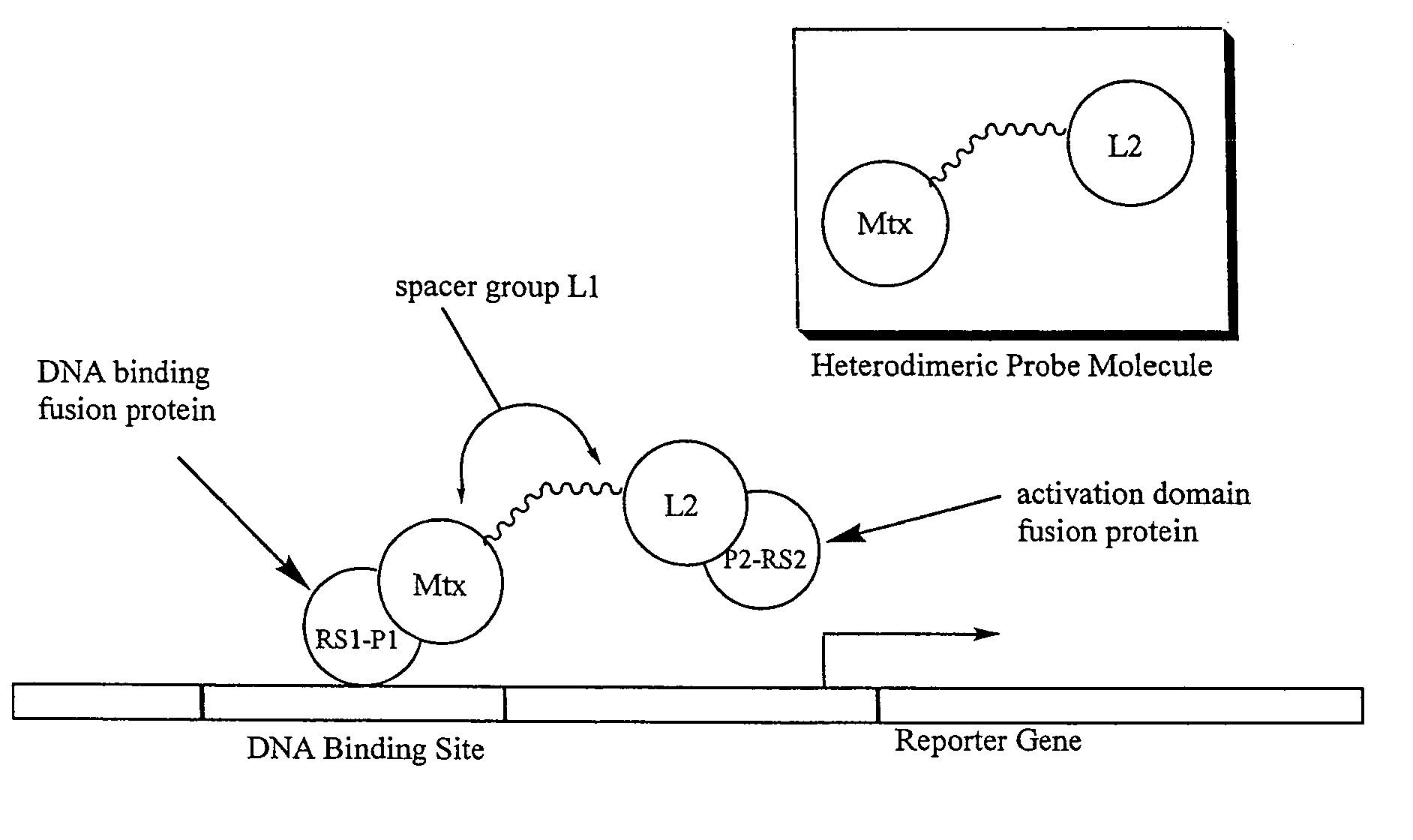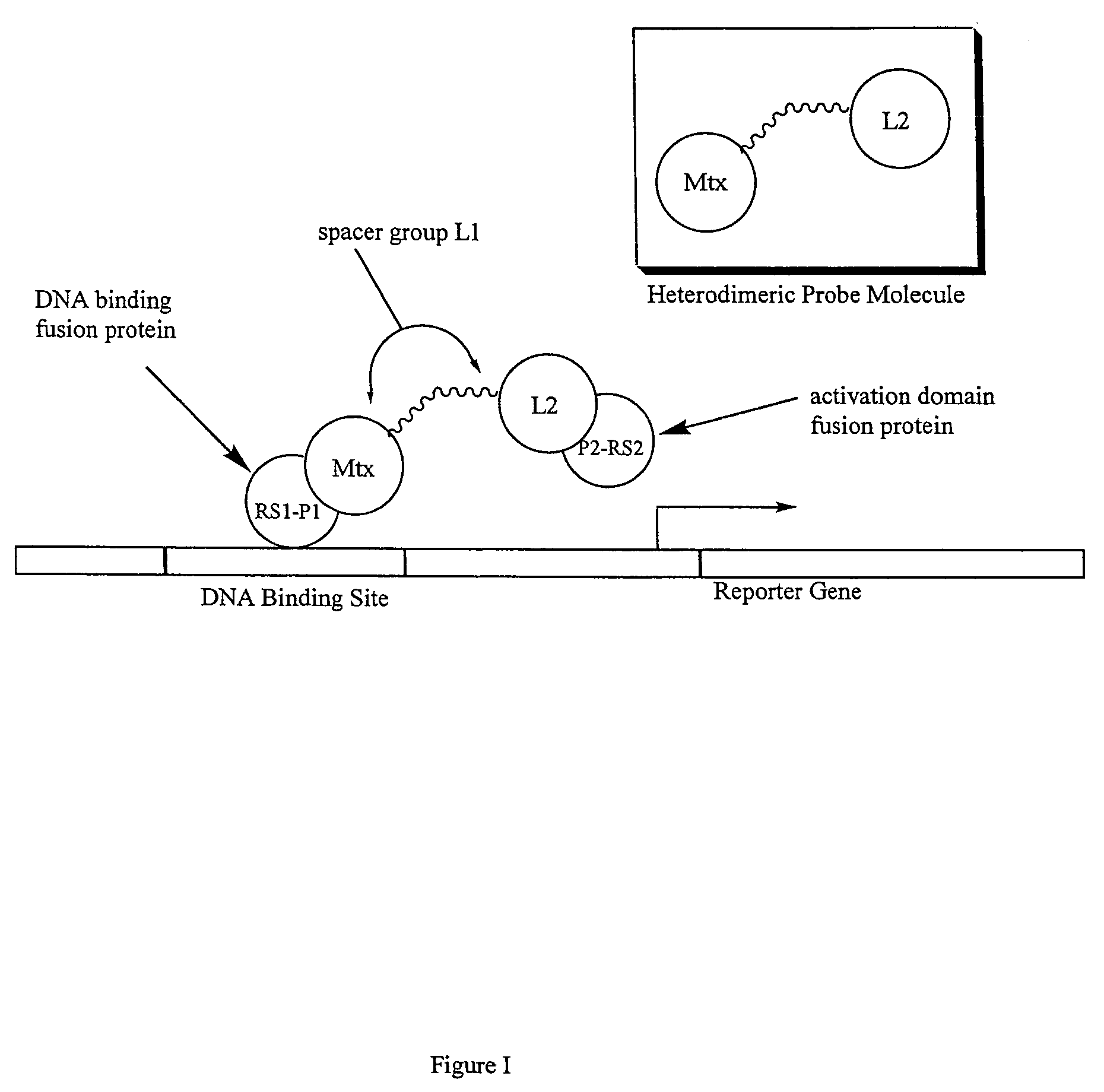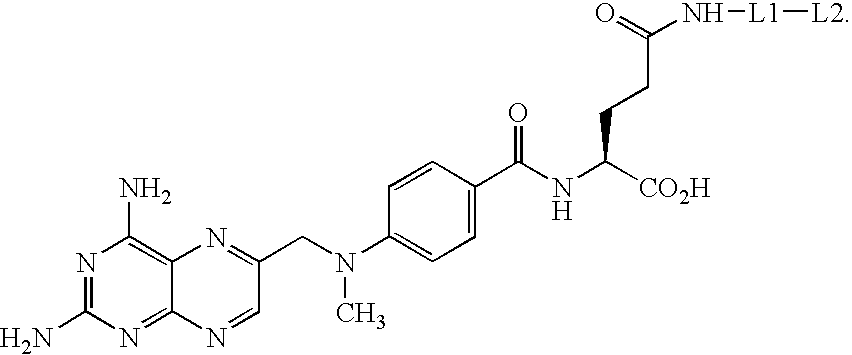Synthesis of methotrexate-containing heterodimeric molecules
a technology of methotrexate and heterodimer molecules, which is applied in the field of synthesis of methotrexate-containing heterodimer molecules, can solve the problems of limited utility, difficult identification of possible protein targets for a pharmacological agent, and little indication as to the mechanism of action, and achieves low toxicity, dimerization efficiency, and optimal membrane permeability.
- Summary
- Abstract
- Description
- Claims
- Application Information
AI Technical Summary
Benefits of technology
Problems solved by technology
Method used
Image
Examples
example 1
[0363]
[0364]To a dry 500 ml round-bottom flask, equipped with a stir-bar, was added 22.5 g (97.4 mmol) of Ag2O followed by the addition of 150 ml of CH2Cl2 and 25.0 g of hexaethylene glycol (88.5 mmol) in 30 ml of CH2Cl2. The flask was then fitted with a pressure equalizing dropping funnel containing 8.7 ml (106.2 mmol) of methanesulfonyl chloride dissolved in 30 ml of CH2Cl2. The solution of methanesulfonyl chloride was then added dropwise over 30 minutes and the resulting solution stirred for 3 days. The mixture was then filtered through celite and then concentrated under reduced pressure to give 37.1 g of crude product as an oil. The material was then purified via silica gel column chromatography eluting with 10% methanol in ethyl acetate to give 16.66 g of the hydroxy-monomesylate 1 (52% yield).
example 2
[0365]
[0366]The 5-PEG hydroxy mesylate 1 (16.7 g, 46.2 mm ol) was placed in a 500 ml round-bottom flask, equipped with a stir-bar and jacketed condenser, and dissolved in 120 ml of DMF. Sodium azide (4.5 g, 69.3 mmol) was then added and the mixture heated to 110° C. for 3 hours. The reaction was then allowed to cool to room temperature and 75 ml of toluene was added. The solvent was then removed under reduced pressure and the resulting white solid was dissolved in 300 ml of ethyl acetate. The solid was removed by filtration and the resulting solution concentrated under reduced pressure to give 18.8 g of product 2 (100% yield) which was contaminated by a small amount of DMF (approximately 1:1 DMF to product).
example 3
[0367]
[0368]The 5-PEG Hydroxy Azide 2 (19.1 g, 52.1 mmol) and diisopropyl ethyl amine (13.6 ml, 78.2 mmol) were placed in a 1 L round-bottom flask, equipped with a magnetic stir-bar, and dissolved in 250 ml of CH2Cl2. The flask was then fitted with a pressure-equalizing dropping funnel containing 4.7 ml (57.3 mmol) of methanesulfonyl chloride dissolved in 50 ml of CH2Cl2. The solution of methanesulfonyl chloride was then added dropwise over 30 minutes and the resulting solution stirred for 2 hours. The resulting solution was then diluted with 300 ml of CH2Cl2 and washed with 500 ml of 1M HCl, 500 ml of saturated, aqueous sodium bicarbonate, and 500 ml of brine solution. The organic layer was separated, dried with anhydrous sodium sulfate, filtered and concentrated under reduced pressure to give 20.1 g of product 3 (100% yield).
PUM
| Property | Measurement | Unit |
|---|---|---|
| Structure | aaaaa | aaaaa |
Abstract
Description
Claims
Application Information
 Login to View More
Login to View More - R&D
- Intellectual Property
- Life Sciences
- Materials
- Tech Scout
- Unparalleled Data Quality
- Higher Quality Content
- 60% Fewer Hallucinations
Browse by: Latest US Patents, China's latest patents, Technical Efficacy Thesaurus, Application Domain, Technology Topic, Popular Technical Reports.
© 2025 PatSnap. All rights reserved.Legal|Privacy policy|Modern Slavery Act Transparency Statement|Sitemap|About US| Contact US: help@patsnap.com



